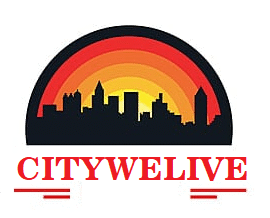Over the past decade, India has transformed into a global leader in healthcare by focusing on affordability, innovation, and inclusivity.
India’s pharmaceutical industry ranks third globally in terms of volume and 14th in value. It is the largest supplier of generic medicines, contributing 20% of the global supply, and plays a vital role in providing affordable vaccines worldwide.
In 2023–24, the sector recorded a turnover of ₹4,17,345 crore, maintaining a consistent annual growth rate of over 10% for the past five years.
For the general public, this translates into greater access to affordable medicines, improved healthcare, and employment opportunities in pharmaceutical factories and laboratories across the country. From small towns to major cities, India’s pharmaceutical growth is creating jobs and saving lives.
The government attributes this success to several flagship initiatives.
Under the Pradhan Mantri Bhartiya Janaushadhi Pariyojana (PMBJP),
15,479 Jan Aushadhi Kendras provide generic medicines at prices up to 80% lower than branded alternatives. For example, a heart medication that once cost ₹500 may now be available for just ₹100.The Production Linked Incentive (PLI) Scheme for Pharmaceuticals, with an outlay of ₹15,000 crore, supports 55 projects to manufacture high-end drugs—including treatments for cancer and diabetes—domestically.
Another PLI scheme, with a budget of ₹6,940 crore, focuses on producing key raw materials like Penicillin G, thereby reducing dependency on imports. Similarly, the PLI for Medical Devices, backed by ₹3,420 crore, is boosting the domestic production of critical tools such as MRI machines and heart implants.
Additionally, the Promotion of Bulk Drug Parks Scheme, with an allocation of ₹3,000 crore, is facilitating the development of mega manufacturing hubs in Gujarat, Himachal Pradesh, and Andhra Pradesh—enabling faster and more cost-effective medicine production.
The Strengthening of Pharmaceuticals Industry (SPI) Scheme, with ₹500 crore in funding, supports R&D and lab upgrades to enhance the global competitiveness of Indian pharmaceutical firms.
“These initiatives ensure that medicines are made in India, for India, and for the world—maintaining low costs and high quality,” the government stated.
India supplies 55–60% of UNICEF’s vaccines, fulfills 99% of the WHO’s demand for the DPT vaccine (Diphtheria, Pertussis, and Tetanus), 52% for BCG (used primarily against tuberculosis), and 45% for measles. From Africa to the Americas, Indian-made vaccines are saving millions of lives.
Domestically, these schemes are generating employment for young Indians—ranging from factory workers to researchers. Foreign direct investment (FDI) in the pharmaceutical sector reached ₹12,822 crore in 2023–24 alone, reflecting strong global confidence in India’s healthcare potential.
India permits 100% FDI in medical devices and greenfield pharmaceutical projects, positioning itself as a preferred destination for global healthcare companies.
India’s pharmaceutical sector is more than just an industry—it is a lifeline. Through initiatives like PMBJP, PLI, and Bulk Drug Parks, the Modi government aims to ensure that no one is left behind in accessing quality healthcare.
From affordable medicines at Jan Aushadhi Kendras to lifesaving vaccines exported across the globe, India is building a healthier, more self-reliant future.




